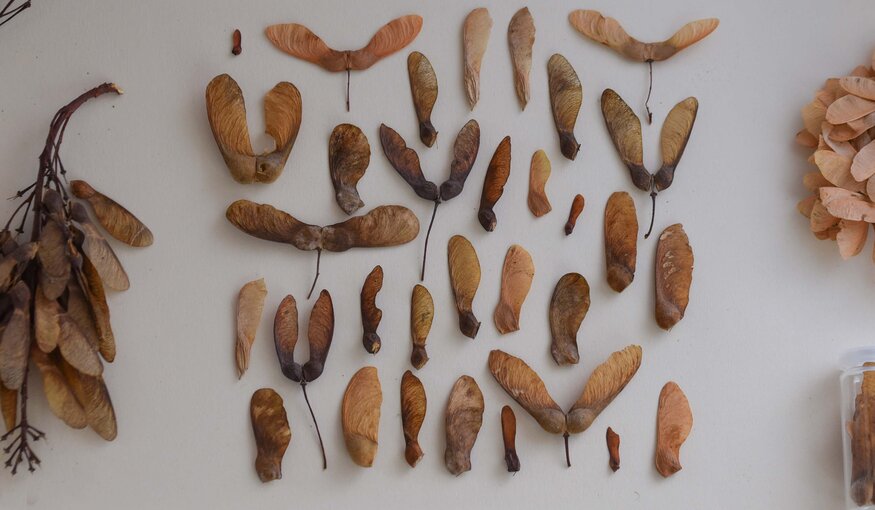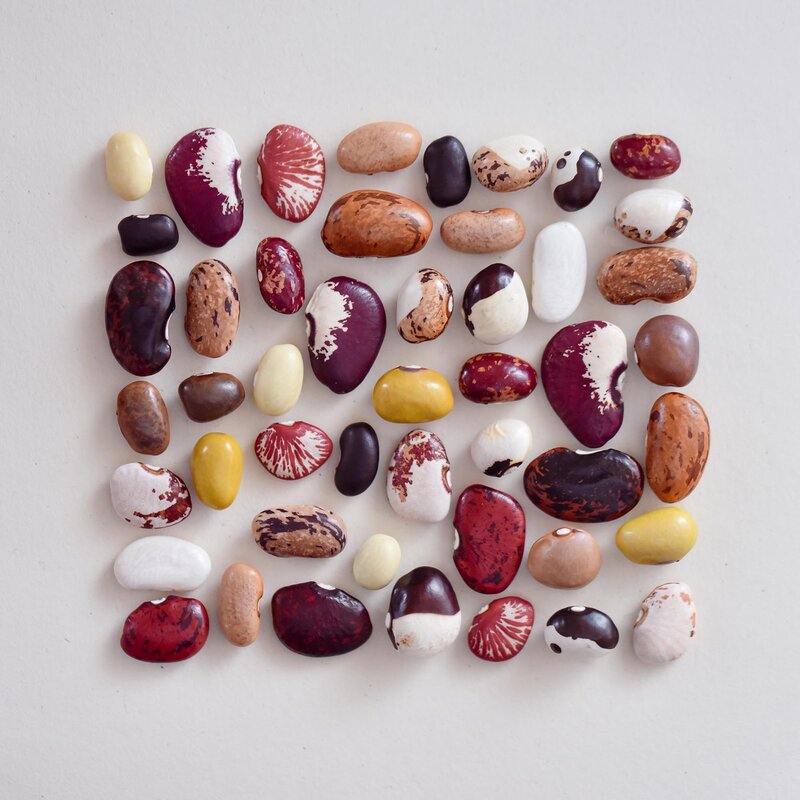Showcasing Seeds: The Aesthetic of Diversity

4 October 2024
At face value, it’s hard to understand the potential of seeds. Often only a few millimeters in size, their importance may also seem small to the average person. But a keen eye and a clean lens allow Swiss author, landscape architect and photographer Jonas Frei to share his passion for seeds and their diversity with the world. One kernel, a thousand possibilities.
His following is growing on Instagram, where he posts mesmerizing, colorful photos of seeds he’s collected on his many travels. From pictures of maize varieties to cross sections of walnuts, his work offers a peek into the breadth and beauty of seed diversity around the world.
This week, I got together with Jonas to discuss his career, what inspires him, and his interest in conservation. Read below for the full interview.

Brooke Taylor: Why did you choose seeds as the subjects of your photography?
Jonas Frei: Seeds are infinitely diverse in shape and color, and almost all of these characteristics are closely linked to the plant's dispersal strategy, which fascinates me. But they also store life, a dormant intermediate generation between what we call a plant. It is an exciting way of presenting the diversity of nature in a way that is easy to understand.
Brooke: Did your enthusiasm for nature grow alongside the pursuit of your art?
Jonas: Actually, it was the other way around for me. Nature has always been the greatest fascination for me. At some point, I tried to share my enthusiasm with others. This resulted in many projects: photographs, films, books, sketches and illustrations.
Brooke: What photography projects are closest to your heart?
Jonas: Photography is a very exciting medium that I use to depict the diversity of species. I use photography for documentary purposes, but at the same time I try to draw attention to the aesthetics of the natural. Through the aesthetic display of seeds, the diversity, similarities and differences between the species and varieties become particularly visible. A few years ago, while working on a book about the biodiversity of the walnut family, the Juglandaceae, I started to work with seeds of walnut and hickory species. In order to understand their systematics [patterns of evolutionary relationships], I laid them out. This gave an easily understood yet aesthetic overview of the species. I then started to create similar displays with seeds, fruits and seed pods of all kinds from my collection to show the variety of species and cultivars.

Brooke: Do you think your work makes a difference in the world of seed conservation?
Jonas: I hope that my pictures will draw some attention to the diversity of seeds. Seeds are something extremely commonplace, we encounter them every day in ground bread, as a rice dish, in peppercorns and as cherry stones.
But we are not aware of their importance in everyday life. At the same time, they are something incredibly fascinating, both visually and botanically. If my pictures can trigger this fascination in people, they will have achieved something.
Brooke: Where do you find the seed diversity that you photograph?
Jonas: In fact, I have built up a collection of thousands of seed accessions, most of which I collect myself. Especially with cultivated plants, however, I have received some help from growers and breeders. For specific projects, I also had the possibility to photograph in herbaria or receive material from research projects and seedbanks.

Brooke: Do you have a favorite seed?
Jonas: This is a difficult question that is not easy to answer. What always fascinates me most is the diversity and the subtle differences between species or cultivars. The totality of this incredible wealth of shapes and colors is what makes the subject so interesting for me.
But there are always topics that particularly fascinate me, such as walnuts, whose seeds have inspired me to write a whole book about the walnut family. Or beans, because it's fascinating how much diversity of shape and color we miss out on when we feed on the few varieties that are regularly cultivated.
Brooke: Do you find that people are curious about seed diversity?
Jonas: The most common reaction is astonishment, especially on social media in response to pictures with a large variety of bean or corn kernels in different colors. People are not used to the fact that corn kernels are not simply yellow and always the same size. I find it fascinating that I am regularly asked whether these colored corn kernels are natural or painted. People also often ask about seed sources or are simply amazed by the variety of colors and shapes. Sometimes I am a little shocked at how this diversity is so taken for granted and has become so rare.

Bio:
Jonas Frei is a landscape architect and urban ecologist from Zurich, Switzerland. His areas of expertise are botany, photography, documentary film, illustration and the design of open spaces. He is author of books and various articles and has published on the diversity of hazelnuts and walnuts.
To see more photos by Jonas, follow him on Instagram @j.d.frei or visit him on the web at www.foifacht.ch.
Categories: For Educators, For The Press, For Partners
